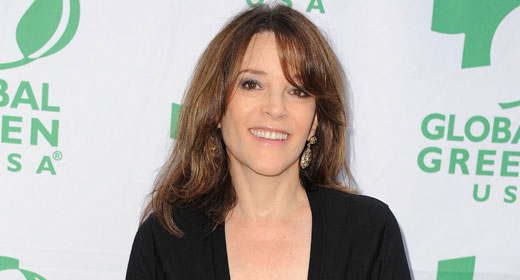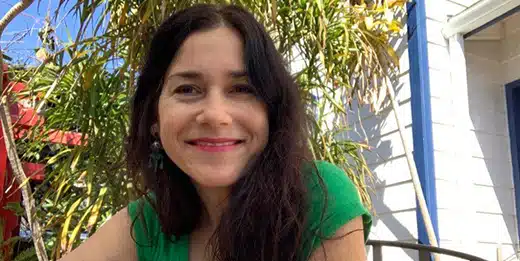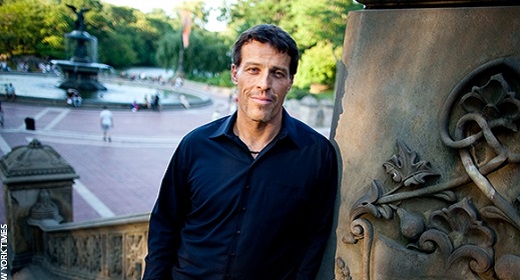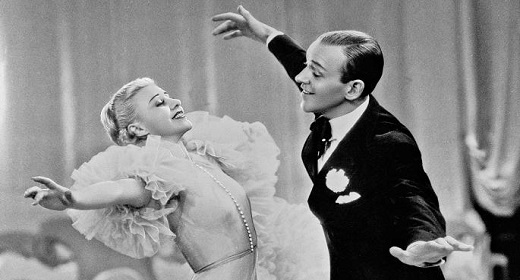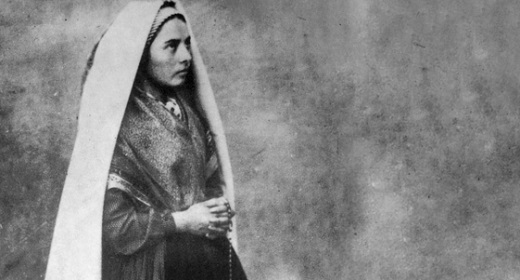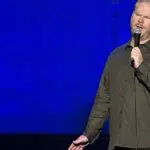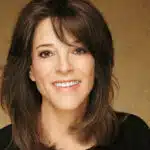by Marie Speed: The life coach talks about his dark childhood, breakthrough coaching and new book—and spills some secrets to finding a rich and rewarding life along the way…
Everything is bigger in Tony Robbins’ world.
His house near Palm Beach, Fla., is massive, the furniture oversized, and even the view from the living room seems to pan across a hemisphere of deep-blue ocean. It’s a world that seems perfectly scaled to the 6-foot-7 motivational speaker and life coach, the man who has asked thousands of ordinary people to walk barefoot across hot coals and routinely advises some of the most powerful people on the planet.
He turns 55 in February, but it seems Tony Robbins has been a household name for decades and a mega-rich success story for almost that long. Which may be part of the reason he felt qualified to write his latest book, MONEY Master the Game: 7 Simple Steps to Financial Freedom, an almost-700-page tome designed to enable regular people to achieve the financial freedom of the 1 percent—using many of the same approaches.
“My hope is that people who have never been exposed to my work will go for this because although it isn’t motivational, it will certainly inspire you,” he says, settling into a large chair, ready to tell a story or two, his famous exuberance and energy offset by a big voice that is almost hoarse. The new book is his latest passion, capping two intense years of interviewing and learning from financial heavyweights such as Carl Icahn and Paul Tudor Jones, in addition to a who’s who of famous friends, including Richard Branson, Steve Wynn and Kyle Bass.
He’s come a long way since he was known as Anthony Mahavorick from Glendora, Calif., with an alcoholic mother, her string of four husbands and a childhood he has described as “incredibly violent.”
It wasn’t the kind of environment conducive to inner confidence, to say the least, but the boy found a way to “pound certainty” into himself.
“It came from reading,” he says. “I had no role models. I did love reading. I started reading Emerson’s essays, [James Allen’s] As a Man Thinketh, Viktor Frankl’s Man’s Search for Meaning—they rocked my world. They made my problems look like nothing. I get emotional thinking about it today, all these years later. It made me believe that, a) anything can be changed and made better, and if you couldn’t change the physical circumstance you could still change your experience of it; and b) it made me think that reading could transport me to another world where I could find the answers. So I took a speed-reading course and read 700 books in seven years—all on psychology, physiology, anything that could make a difference in life.”
Robbins, who took his name from his mother’s third husband, has managed to convert that dark childhood into a gift, saying it forced him to learn about people.
“I became a practical psychologist to keep things sane. I had to go out and connect with the world because [my mother] never left the house. She was 5-foot-1 with size O breasts and Dolly Parton wigs. I went to the grocery store every single day and did the shopping and made the meals and took care of my brother and my sister. The beauty that came out of that crazy life was I learned about people. I loved people, and it was an escape to get out.”
Around that time an uncle told Robbins about a seminar that could help him get on with life and maybe even save some time instead of learning the hard way. So the teen signed up for a seminar by a guy named Jim Rohn.
Rohn, the hugely popular motivational speaker and author, showed Robbins a glimmer of bigger things ahead.
“I pulled up in a 1968 Baja bug to the South Coast Plaza Hotel in Orange County, Calif. I listened to the seminar; my eyes were this big; I was on fire. I was so wired and excited and came out with these huge goals.… I said, ‘I want to change the world.’ ”
He could see his whole life playing out before him, all the way to the top job, president of the United States. But he had to start somewhere, so he ran for high school student body president. “I wasn’t the most popular kid by any stretch,” he recalls.
“I ran on real issues. I talked to people, which you never did—it was just a popularity contest. I learned if you were sincere and real and raw and you cared, you could get through to people.”
It was a start. He was elected, and he began to have bigger dreams, like being a sportscaster.
“I managed to get some interviews with the L.A. Dodgers and Rams, and with Howard Cosell, who was very big at that time. I did it purely by persistence,” he says. Still, life at home was as rocky as ever. Only months after the Rohn seminar—on Christmas Eve—Robbins’ mother chased him out of the house with a knife, and he vowed to go it alone. That’s when he went looking for a job.
“I went to work as a janitor, then formed a strategy to think about what I was going to do to make my way. I took products I thought I believed in, and I sold them. Then I thought, I want to go work for this guy Jim Rohn. I found him again, went to work for him and became the top guy in his company in a short time. I was given a local area called L.A., which was my goal. They didn’t give me an office or a phone and said, ‘You’re in business for yourself, kid,’ so I became his promoter. I learned how to go out and fill 500 people in a seminar for somebody else.”
Today thousands of people flock to Tony Robbins’ seminars, hours-long “immersion experiences” aimed at conquering the fear and inner doubt that often hold people back from overcoming obstacles and achieving greatness. Robbins has also written two best-selling books and authored numerous audiotapes. He has starred in movies, launched a television show and coached everyone from Bill Clinton to Oprah Winfrey to Princess Diana—an endless star-studded roster.
The Anthony Robbins Cos. include Namale Resort and Spa in Fiji; Advisors Excel, an insurance marketing firm; Stronghold Management, investment advisers; America’s Best 401k, a retirement income planning firm; Cloud Coaching International, a sales maximization firm; and several more around the globe. Their combined annual revenue exceeds $6 billion. The Anthony Robbins Foundation feeds hungry families in need—42 million to date.
He has also found happiness at home after a failed first marriage. He describes his wife, Sage, to whom he has been married for 13 years, as “the greatest thing in my life.”
In short, Robbins has built an empire—and a larger-than-life persona—on his breakthrough coaching and has developed a whole vocabulary in the motivational world related to achieving “peak performance.” For example, Robbins doesn’t put a lot of stock in feel-good mantras alone. He thinks the key is to change your biochemistry—and then get to work. Robbins uses “incantations,” powerful positive affirmations combined with focused intensity, altered breathing and exercise to change one’s mental state and ramp up energy.
“I don’t start with the mind,” he says. “The mind is the weakest part to start with. I start with the body—if I change your biochemistry, if I do it consistently day and night, it becomes your new norm, and in your new norm, sparks happen. Now your brain says, I can see it! It’s not just stage-of-life or age—[casino magnate] Steve Wynn is 72 years old and is as driven and energetic as anyone can be. I can name 20 guys like that.”
He says the No. 1 thing people need is a “compelling future, something to look forward to that excites you,” he says. “Something that will get you up early and keep you up late. It’s hard to do when you are in a low state, so I put people in an environment eight, 10, 12 hours a day where you start doing things you don’t think you can do—jumping out of an airplane, crossing some fire. And all the while you are [experiencing] insights. It doesn’t take 10 years to have a breakthrough—it’s a moment; it’s a moment when your brain says, No f*****g more!; This is it!; I quit!; Let’s make this happen!; Let’s move!”
To effect change, Robbins suggests people alter their “states” of consciousness by revving up their energy and emotional well-being. His high-energy immersion coaching, coupled with tools people can use to maintain the momentum long after his seminars, provide the kind of intense environment many people need to start changing their attitudes and behavior.
“The state you are in determines your abilities. Everyone’s got the ability. It’s like I have a great computer but if I’m not going to plug it in, I am not going to have much power,” he explains.
A strategy for making change is also necessary, and then there’s the story we all cling to that can empower you—or hold you back. For example, typical story lines that hold people back might includeI’m heavy because I have big bones or I will never succeed because I was abused as a child.
“Your story is not why [you’re stuck],” Robbins says. “It’s just that you believe your story. A story either empowers or disempowers you. It’s comforting and the reason it is comforting is that we are all deathly afraid of failure.”
Fear of failure is a theme that courses through Robbins’ work, and although he says he’s had his share of failures, it’s not a concept he believes in.
“I have plenty of failures, but I don’t look at them that way, not because I am in denial but because I make myself learn something from it. Then it becomes a steppingstone instead of a failure.”
Robbins cites an early failure when he worked for more than two hours at a seminar—in full view of his audience—on a “severely depressed” woman whom he could not seem to help. He never fully cracked the case, which is rare for him, and by the time he made some headway with her, most of the attendees had left the room.
Another setback was when his television show Breakthrough was canceled after two episodes—an outcome he blames partly on a lack of marketing but maybe also on its lack of appeal to a broad viewership. There are probably many more failures, but Robbins doesn’t deal in the currency of regret. Almost everything is a teachable moment, and he sees having a higher goal—one of helping others—as most helpful in eradicating the fear of failure.
“I think you have to have something larger than yourself that you are after because [otherwise] you will let your fear dominate you. But if you have something—your children, your mom, your dad, a friend, a mission—something you want to do that really pulls you [the fear disappears]. Because push never lasts. ‘Push’ motivation is I’m going to make myself do that. You can do that for a while, but you are eventually going to [regress]. When you are pulled toward something larger than yourself, you’ll make the sacrifices; you’ll do what’s necessary because it’s not just about you. I really believe life supports what supports more of life.”
These days Robbins has more money than he can spend and access to just about anyone on the public stage. His goals have more to do with work his foundation does than with making more money. The Anthony Robbins Foundation is aimed at improving the “quality of life for people often forgotten—youth, homeless and hungry, prisoners, elderly and disabled.” Profits from his most recent book have been donated in advance to the Tony Robbins 100 Million Meal Challenge, which invites individuals and companies to match his 50 million-meal donation.
Other charitable efforts include SwipeOut, an app due out in January that will allow consumers to connect their credit cards to a system that rounds up each purchase to the nearest dollar, translating spare change into donations toward helping end hunger, water-borne disease and human trafficking. The International Basket Brigade feeds people around the world, and the Global Youth Leadership Summit is a five-day leadership program.
“There are people who will give up their security in a heartbeat for those people we love,” he says. “We already have that in us. It’s like a muscle that needs to be used more. The way I started [giving] was by feeding two families, and I did it because someone fed my family. Then it was four, and it was eight, then 16, and my companies grew and my influence grew, and I’ve done well enough to say, ‘I’m going to feed more people this year than I’ve ever done in my life.’ ”
Despite his success, Robbins is still on the road most of the year, holding seminars in cavernous convention centers or coaching people one at a time, delivering his own brand of compelling and charismatic inspiration to thousands of people who are stuck or afraid or discouraged. From wanting to lose weight to starting a new business, from saving a marriage to becoming a millionaire, Robbins has a way to help, and he gets results. He says his message hasn’t really changed over the years. He may not have to try as hard to prove himself, and maybe he knows some things work better than others, but he says, “I’m just as driven—only now I know who I am.”
Still, the outcome is the same. It is big. It is love. It is the feeling he gets when he knows he has reached someone.
“It’s euphoric—it’s out of this world. Sometimes I walk backstage and tear up. I feel like God comes through me. It’s when I see that light in their eyes again, when they’re alive. It’s not always an easy moment—sometimes it’s a pretty tough moment. I will do whatever it takes to get people there without harming them. That’s why I can reach people. They have only so many ways to be stuck, and I have lots of ways to break their stuck-ness. How do I know? You can feel it, you can see it. When you see them lose 30 or 100 pounds. When a guy grows his business 30 percent in a year. You can feel when they go from depressed to lit up. And when you see them three weeks later in a new pattern, it excites the hell out of you. I have friends all over the world because of this.”
Why MONEY?
Robbins explains why he had to write his new book.
Tony Robbins admits it’s been a long time since his last best-seller, Awaken the Giant Within, published in 1991. He says it’s because he hates to write.
“First, I’m a person whose tempo is very rapid. My fingers can never go as fast as my brain functions. Second, when I speak I can see the impact. I’m changing constantly to get where I want to go [to reach people]. In a book, it’s permanent, and you have no feedback device and you are alone and it’s slow.”
All that changed when he saw how badly people were impacted by the recession. “I was so angry,” he says. “I saw all of my childhood pain in everyone around me, from my barber to billionaire clients.”
That’s when he began work on MONEY: Master the Game; 7 Simple Steps to Financial Freedom. “For the past two years, I just went full-tilt and started doing the writing and interviewing intensely. I wanted to write the definitive book on this that would level the playing field, that would put you back in control—that would give you basic financial stability so you would not have to worry if you take these seven steps.”



